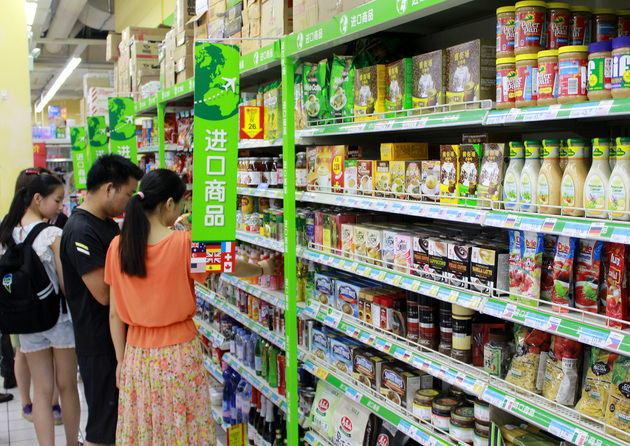
Photo/VCG
China's foreign trade growth will be backed by a wide range of trading partners and a resilient import and export structure, and a domestic market with growing demand in 2019, despite some uncertainties remaining in the global outlook, said political advisors and legislators from business circles.
Their comments came after the General Administration of Customs released the trade figures for the first two months on Friday, which said the country's foreign trade volume in February fell 9.4 percent year-on-year to 1.81 trillion yuan (269.6 billion U.S. dollars).
"Slower growth was mainly caused by business disruptions during the Spring Festival holiday and the lack of clear signals in the trade dispute with the United States," said Wang Xiaosong, a researcher with the National Academy of Development and Strategy at Renmin University of China.
Wang said the Spring Festival was the major factor, and "if we rule that out, the trade is still growing".
Trade volume in February climbed 10.2 percent year-on-year after deducting the Spring Festival impact, according to the customs data.
As many parts of the world have been affected by factors such as weak market demand and trade protectionism, it is understandable to see some countries reporting a slowed pace in exports, said Zhang Yuyan, director of the Institute of World Economics and Politics at the Chinese Academy of Social Sciences and a member of the 13th National Committee of the Chinese People's Political Consultative Conference.
"China's advantage in foreign trade can be found in technology upgrading, brand, quality and services, rather than low prices for the next stage, although developed countries are trying to maintain and enhance their strength in middle and high-end product industries," said Zhang.
He said China's export quality will gradually increase and so will the price. As a manufacturing powerhouse and major destination for foreign direct investment, the country's trade growth rate is expected to be higher than the global level, and its market share will continuously increase in global trade in 2019.
With a total value of 1.42 trillion yuan (211.5 billion U.S. dollars), mechanical and electrical products including machine tools, crane, construction machinery expanded to 58.3 percent of China's total exports in the first two months, while the nation's exports of labor-intensive products such as furniture, garments and plastic goods dropped 3.9 percent year-on-year.
From the customs data, apart from the trade dispute between China and the U.S. that has seen major declines, other markets, such as the European Union, the Association of Southeast Asian Nations and Japan, have seen notable growth. The EU and ASEAN accounted for 16.2 percent and 12.8 percent of China's total foreign trade volume in the first two months, both higher than the proportion with the U.S., which is 11.6 percent.
The total trade volume with the economies related to the Belt and Road Initiative in the same period amounted to 1.28 trillion yuan (190.7 billion U.S. dollars), up 2.4 percent year-on-year, about 1.7 percentage point higher than the country's average growth rate in foreign trade. It accounted for 28.2 percent of the nation's total trade.
Apart from the impact brought by the trade dispute between China and the U.S., Xue Rongjiu, deputy director of the Beijing-based China Society for WTO Studies, said these figures demonstrate that China's import and export structure is able to adjust flexibly, and it is fairly resilient.
Gao Yan, a CPPCC National Committee member and chairwoman of the China Council for the Promotion of International Trade, said as the 2019 Government Work Report stressed that China will promote trade and investment liberalization and facilitation, the country will further optimize the foreign trade structure this year.
"Foreign trade development will further coordinate with national economic growth, environmental resource protection, industrial structure adjustment and regional development strategy," she said.
While China is accelerating the shift of driving forces for foreign trade, the country's cross-border e-commerce and procurement have also grown fast in recent years, marking a new highlight for foreign trade growth, said Qian Fangli, a deputy to the 13th National People's Congress.
Through independent innovation and improving branding capabilities, foreign trade companies have gradually bolstered the country's internal power for growth, said Qian, who also is director-general of the department of electronic commerce and information at the Ministry of Commerce.
Email: wenqiao@nbd.com.cn


 川公网安备 51019002001991号
川公网安备 51019002001991号





